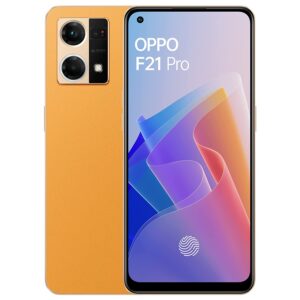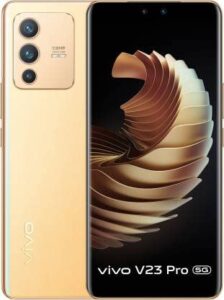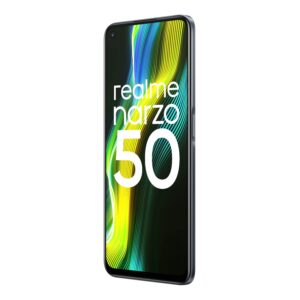How to choose the right smartphone for you? Leave a comment
Welcome to the ultimate guide on choosing the perfect smartphone for 2023! In this fast-paced digital era, finding the right smartphone that caters to your unique needs and preferences can be daunting. But fear not because we’re here to make your decision-making a breeze.
Whether you’re a tech-savvy individual or a casual user, our expert tips and factors to consider will empower you to make an informed choice that will leave you feeling like a true smartphone connoisseur.
Choose the Right Smartphone for Your Needs
So, buckle up and get ready to embark on a journey of discovery as we delve into the world of smartphones and help you find your perfect match.
Introduction
The introduction is the first step in choosing the right smartphone for you. It sets the tone for the entire process and helps you understand the importance of making an informed decision.
Regarding smartphones, countless options are available in the market, each with its features and specifications. Therefore, it is crucial to take the time to evaluate your needs and preferences before making a purchase.
Understanding Your Needs & Preferences
When choosing the right smartphone for you, it is essential to understand your needs and preferences. Every individual has different requirements and priorities when it comes to their smartphone usage.
By considering these factors, you can ensure that you select a device that meets your specific needs and enhances your overall smartphone experience.
Usage patterns
Firstly, consider your usage patterns and what you primarily use your smartphone for. Are you a heavy gamer, a photography enthusiast, or someone who relies heavily on productivity apps?
Understanding your usage will help you determine the specifications and features that are important to you. For example, if you are a gamer, you may prioritize a smartphone with a powerful processor and ample RAM to handle graphic-intensive games smoothly.
Design and aesthetics
Next, consider your preferences in terms of design and aesthetics. Smartphones come in various sizes, shapes, and materials. Some people prefer compact devices that can be easily operated with one hand, while others prefer larger screens for multimedia consumption.
operating system
Another crucial aspect to consider is the operating system. The two major operating systems in the smartphone market are Android and iOS.
Each has its features, user interface, and app ecosystem. If you are already accustomed to one operating system, it may be more convenient to stick with it. However, if you are open to exploring new options, consider the advantages and disadvantages of each operating system and choose the one that aligns with your preferences.
budget
Lastly, think about your budget. Smartphones come in a wide range of prices, and you must set a budget you are comfortable with.
Determine the features and specifications that are essential to you and find a smartphone that offers the best value for your money within your budget range.

Researching Different Smartphone Brands and Models
When choosing the right smartphone for you, it is essential to research different brands and models available in the market. With so many options to choose from, it can be overwhelming to make a decision.
However, by conducting thorough research, you can narrow your choices and find the perfect smartphone that meets your needs and preferences.
#1 researching different smartphone
One of the first steps in researching different smartphone brands and models is identifying your requirements.
Consider what features are important to you, such as camera quality, battery life, storage capacity, and performance. This will help you prioritize your needs and focus on smartphones that offer these features.
#2 explore different smartphone brands
Next, explore different smartphone brands and their reputation in the market. Look for brands with a good track record of producing high-quality smartphones with reliable performance.
Reading customer reviews and ratings can also provide valuable insights into the user experience and satisfaction with a particular brand or model.
#3 align with your requirements
Once you have identified a few brands that align with your requirements, delve deeper into the specific smartphone models they offer.
Compare the specifications, features, and prices of different models to determine which ones best fit you. Monitor processor speed, RAM, display resolution, and camera capabilities.
#4 operating system
It is also essential to consider the operating system of the smartphone. The two most popular operating systems are Android and iOS.
Each has its own set of features and user interface, so it is crucial to choose one that you are comfortable with and suits your needs.
#5 after-sales service and support
Also, consider the after-sales service and support the smartphone brand provides. Look for brands that offer reliable customer service and have a good warranty policy if you encounter any issues with your device.
By thoroughly researching different smartphone brands and models, you can make an informed decision and choose a smartphone that meets your requirements and preferences. Remember to consider factors such as features, performance, price, and customer reviews to ensure you select the right smartphone for you.

Considering the Operating System
When choosing the right smartphone, one vital factor is the operating system (OS) on which the device runs. The operating system determines the smartphone’s user interface, features, and overall functionality. There are three central operating systems: iOS, Android, and Windows.
iOS
iOS is the operating system Apple developed and exclusively used on iPhones. It is known for its sleek and user-friendly interface, seamless integration with other Apple devices and services, and robust security features.
If you already own other Apple products or prefer a more closed ecosystem, an iPhone running on iOS may be the right choice.
Android
Android, on the other hand, is an open-source operating system developed by Google. It is used by a wide range of smartphone manufacturers, offering various options in terms of design, features, and price points.
Android provides a high level of customization, allowing users to personalize their devices to suit their preferences.
It also offers access to the Google Play Store, which has many apps and games. If you value flexibility, customization, and a wide range of device options, an Android smartphone may be the best fit.

Evaluating the Display and Size
When choosing the right smartphone for you, one vital factor to consider is the display and size of the device.
The show is what you will be looking at most of the time, so choosing a smartphone with a display that suits your preferences is crucial.
size of the smartphone
Firstly, you need to decide on the size of the smartphone. Smartphones come in various sizes, from compact options with smaller screens to larger devices with more extensive displays.
Your size depends on your preference and how you plan to use the smartphone. If you prefer a device that can easily fit in your pocket or small handbag, a compact smartphone with a screen size of around 5 to 6 inches may suit you.
On the other hand, if you enjoy watching videos, playing games, or multitasking on a larger screen, you may opt for a smartphone with a screen size of 6.5 inches or more.
display quality
In addition to size, you should also evaluate the display quality. Look for smartphones with high-resolution displays, such as Full HD or Quad HD, offering sharper and more vibrant visuals.
Consider the type of display technology used, such as LCD or OLED.
OLED displays offer better contrast and deeper blacks, while LCDs may be more affordable.
screen-to-body ratio
Another aspect to consider is the screen-to-body ratio. A higher screen-to-body percentage means the smartphone has minimal bezels and a larger display area, providing a more immersive viewing experience.
Some smartphones also offer features like HDR support, which enhances the color and contrast of the display for a more lifelike visual experience.
durability of the display
Lastly, remember to consider the durability of the display. Look for smartphones with scratch-resistant glass or with a protective screen cover.
This will help prevent accidental scratches and ensure your smartphone’s display remains in good condition for longer.
display and size of different smartphones
By evaluating the display and size of different smartphones, you can choose a device that offers a visually pleasing experience and meets your specific needs.
Whether you prioritize a compact size for portability or a large display for multimedia consumption, a smartphone is perfect for you.
Assessing the Camera Quality
One vital factor to consider when choosing the right smartphone is the camera quality. With the rise of social media and the increasing popularity of sharing photos and videos, having a smartphone with a good camera has become essential for many people.
Assessing the camera quality involves looking at various aspects such as the megapixel count, aperture size, image stabilization, and additional features like optical zoom or night mode. These factors determine the overall performance and capabilities of the camera.
Examining the Battery Life and Charging Options
When choosing the right smartphone, one crucial factor is the battery life and charging options. A smartphone with a long-lasting battery can significantly enhance your user experience, allowing you to use your device for extended periods without constantly recharging.
To examine the battery life of a smartphone, you can start by looking at the battery capacity. This is usually measured in milliampere-hours (mAh). Generally, the higher the mAh rating, the longer the battery will last. However, it’s important to note that other factors, such as the device’s software optimization and power management, can influence battery life.
Reviewing the Performance and Storage Capacity
When choosing the right smartphone for you, it is essential to review the performance and storage capacity of the device. The performance of a smartphone determines how smoothly it operates and handles various tasks. The storage capacity, however, determines how much data, apps, and media you can store on your device.
To assess the performance of a smartphone, you can start by looking at the processor and RAM. The processor is the brain of the device, and a powerful processor will ensure fast and efficient performance.
The RAM, or Random Access Memory, determines how many apps and processes the device can handle simultaneously without slowing down.
Regarding storage capacity, you must consider how much space you require for your files, photos, videos, and apps. Smartphones typically come with different storage options, such as 64GB, 128GB, or even 256GB. Choosing a storage capacity that suits your needs is essential, as running out of storage can be frustrating.
Comparing the Price and Value for Money
When choosing the right smartphone, one crucial factor is the price and value for money. Smartphones come in a wide range of prices, and it’s essential to find one that fits your budget while still offering the features and performance you need.
To compare the price and value for money, start by setting a budget for yourself. Determine how much you will spend on a smartphone and stick to that budget.
This will help narrow your options and ensure you spend your money wisely.
Next, research different smartphone brands and models within your budget range. Look for devices with the needed features, such as a high-quality camera, ample storage capacity, and a fast processor.
Compare the prices of these devices and consider the value they offer in terms of their specifications and performance.
FAQ
Choosing the right smartphone can be overwhelming, with so many options available. To make the process easier, start by understanding your needs and preferences. Consider factors such as your budget, desired features, and the purpose of the smartphone. Research different brands and models, compare their specifications, and read reviews to make an informed decision.
When researching different smartphone brands and models, consider factors such as the brand’s reputation, customer reviews, and the availability of software updates. Look for brands with a good track record regarding reliability and customer support.
The choice of operating system depends on your personal preference and the ecosystem you are already invested in. The two central operating systems for smartphones are Android and iOS. Android offers more customization options and a more comprehensive range of device choices, while iOS provides a more streamlined and secure experience. Consider your familiarity with each operating system and the available apps and services you use regularly.
When evaluating the display and size of a smartphone, consider factors such as screen size, resolution, and display technology. A larger screen size may be preferable for multimedia consumption, while a smaller size may be more convenient for one-handed use.
The importance of camera quality in a smartphone depends on your usage and preferences. If you enjoy taking photos and videos, prioritize smartphones with high-resolution cameras, optical image stabilization, and advanced camera features.
Battery life and charging options are crucial considerations for many smartphone users. Look for smartphones with larger battery capacities and efficient power management systems.








